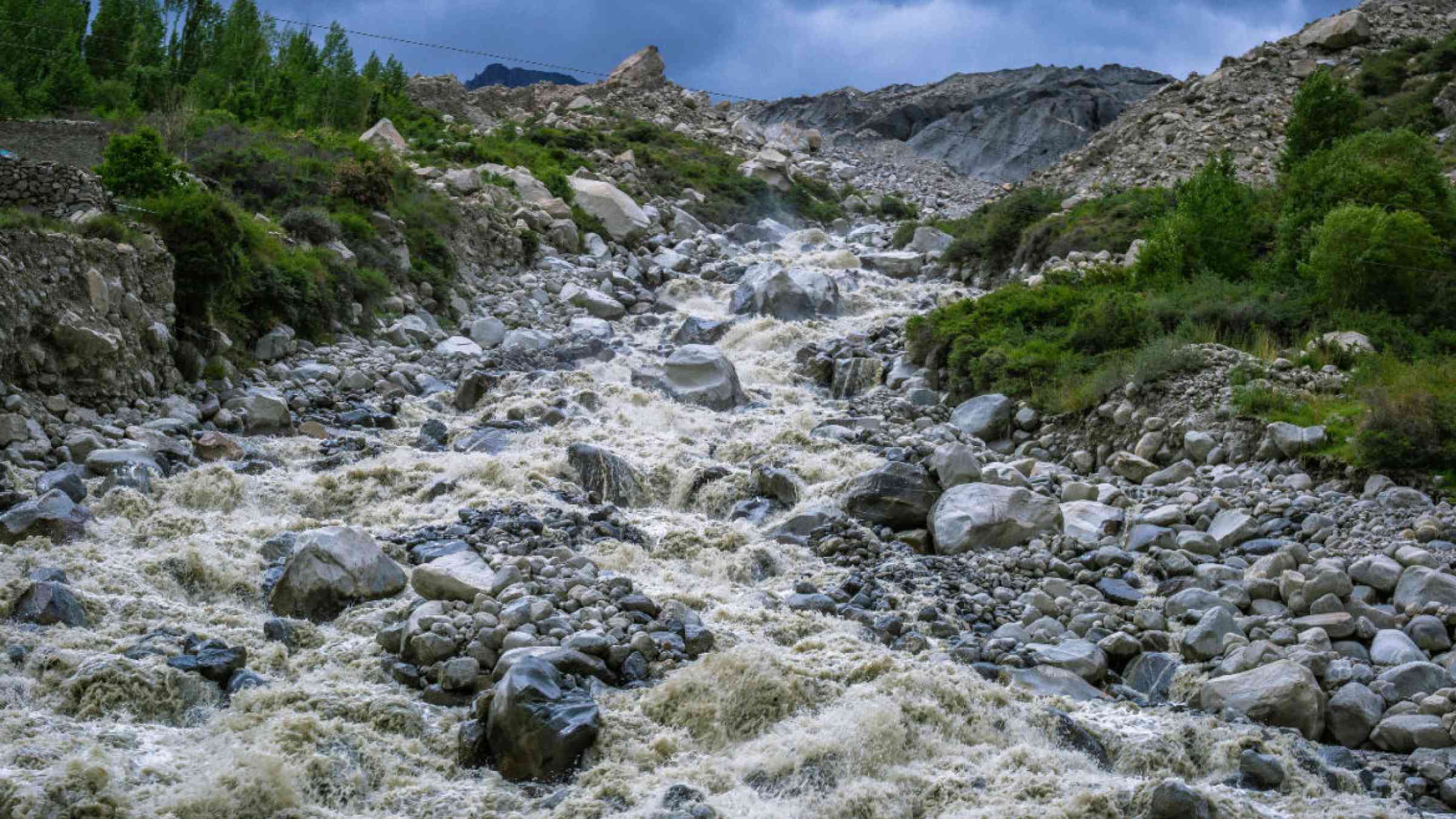
A new study identifying regions around the world where people are most at risk from flooding caused by melting glaciers could help save vulnerable lives.
University of Canterbury School of Earth and Environment Senior Lecturer Dr Thomas Robinson says glacial lake outburst floods (GLOFs) can happen without warning when a natural dam fails.
Dr Robinson is the corresponding author for an article published in international journal Nature Communications that for the first time identifies the areas and communities worldwide most in danger from this growing natural hazard.
“Our research is novel because it identifies the populations who live downstream from these lakes and how vulnerable they are,” he says. “Since 1990 the number and size of glacial lakes has grown rapidly. We show that currently 15 million people globally are exposed to impacts from potential glacial lake outburst floods.
“People in High Mountains Asia are most exposed and on average live closest to glacial lakes with about 1 million people living within 10 km of a glacial lake.”
The new research identifies that more than half of the world’s exposed population is found in just four countries: India, Pakistan, Peru, and China. “While High Mountains Asia has the highest potential for glacial lake outburst flood impacts in India, Pakistan and China, we highlight the Andes, which affects people living in Peru and Bolivia in particular, as a region of concern with similar potential for GLOF impacts but fewer published research studies,” Dr Robinson says.
The Himalayas have been a popular subject for research, accounting for 36% of glacial outburst flooding studies carried out between 2017 and 2021. But Dr Robinson says the Andes has a similar level of danger and is far less well-studied.
“Since 1990, the number of glacial lakes in the region increased by 93% compared to 37% in High Mountains Asia, and as a nation, Peru, has the third highest danger of glacial lake outburst flooding globally.
He says some valleys contain many large glacial lakes but they have very few people living downstream so they’re comparatively less dangerous. But in parts of Pakistan, India and Peru there are huge numbers of people living in these valleys.
Those living in the Andes region are also very vulnerable to the impact of a such a disaster, according to the researchers’ measures of corruption, poverty, education levels and other factors. By contrast, New Zealand is rated the least vulnerable.
Dr Robinson says it’s important to work closely with the exposed communities identified in the study to prevent major disasters.
“We hope our research can be used to help protect vulnerable communities, and help local communities, governments, and international groups like the United Nations prioritise the most dangerous locations.”
The study is based on the latest published data on lake conditions, exposure and vulnerability data, and is a snapshot of the risk faced in 2020. The research team also plans to explore how that risk has changed in the years since then, and what could potentially happen in the future.